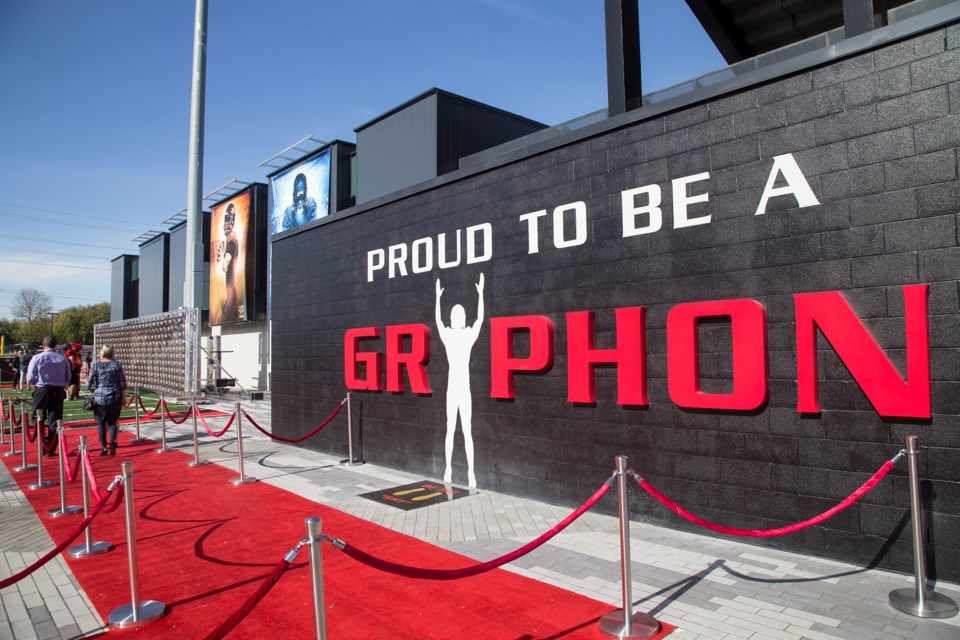The former head coach of University of Guelph’s football program says the newly-opened $10.5-million Pavilion at Alumni Stadium is his parting gift to the players he had an opportunity to guide.
Located directly adjacent to Alumni Stadium at College Ave. W and Powerhouse Lane, a ribbon-cutting for the state-of-the-art facility was held Monday.
Stu Lang — who, along with his wife Kim, funded the pavilion through donations from their Angel Gabriel Foundation — served as Gryphons head coach from 2010 to 2015.
Lang said he identified a need for the players to have a more centralized base of operations in which to train, study and relax.
“As a head coach, I got to see the players more than just on the field. I saw them try to pass their courses, play football, go to the weight room and all of those kind of things,” said Lang during Monday’s event.
In 2015 the Gryphons earned the university’s first Yates Cup since 1996.
“I was very proud of them and this was sort of my parting gift to the players I had a chance to coach — this is my thank you gift to them,” said Lang.
The three-level building houses a 3,300 square-foot locker room, a player's lounge, offices for coaching staff, a rooftop patio and on the second floor it has floor-to-ceiling windows overlooking the field at Alumni Stadium.
Fifth-year running back Johnny Augustine said the new facility allows the players to excel not only on the field, but in acedemics as well.
“Being a student can be very stressful at times — but everything is here for us and it makes things that much easier,” said Augustine during the event.
The Pavilion broke ground in April of 2016 and is mostly occupied as of this week, said Andrew Baechler, media relations for U of G athletics.
“It’s basically a comprehensive football-specific facility that has everything from the administration and coaching rooms to the lower levels that are the new locker room and athletic therapy clinic and equipment room for the team — it’s all encompasing,” said Baechler.
He said the final price tag for the facility was $10.5 million.
Some varsity football programs share facilities with teams in the CFL — like the University of Manitoba Bisons and the Winnipeg Blue Bombers, noted Baechler.
“There are certainly some other football programs in Canada that do have exceptional facilities, but when you look at the location of this facility in the heart of the U of G campus — it’s pretty unique,” he said.
Along with the new $45-million Athletic Centre which opened last year to house the varsity basketball and volleyball teams, Baechler said the university’s athletic facilities could be seen by some as a powerful recruitment tool for student athletes.
“From an infrastructure standpoint, the campus has continued to grow and improve. It was already a top destination for a lot of people, but now it’s just an added bonus,” said Baechler.
Lang said first impressions are everything and he hopes U of G can scoop up some prospective student athletes who tour the facility prior to deciding where to go to school.
“We have a lot of Canadians looking south of the border to NCAA Division 1 and 2 schools. Now, I think, we can compete with facilities. We are hopefully going to be taking the cream of the crop that’s leaving,” said Lang.
